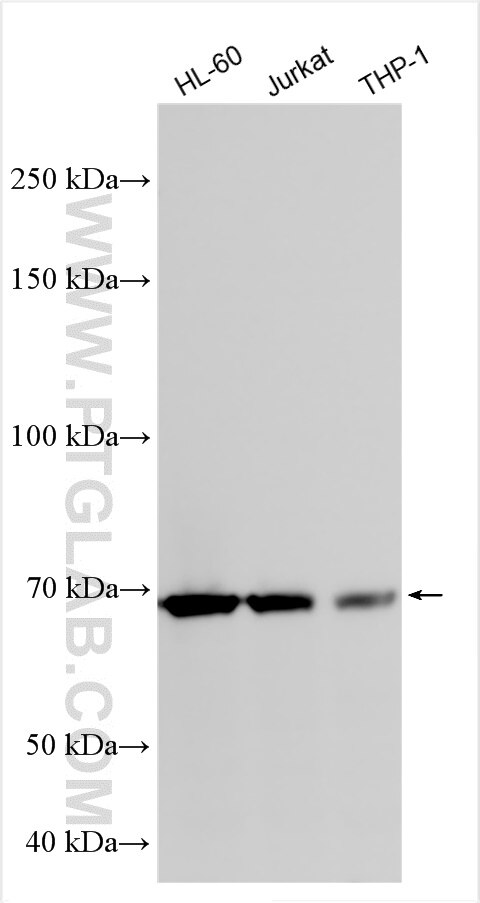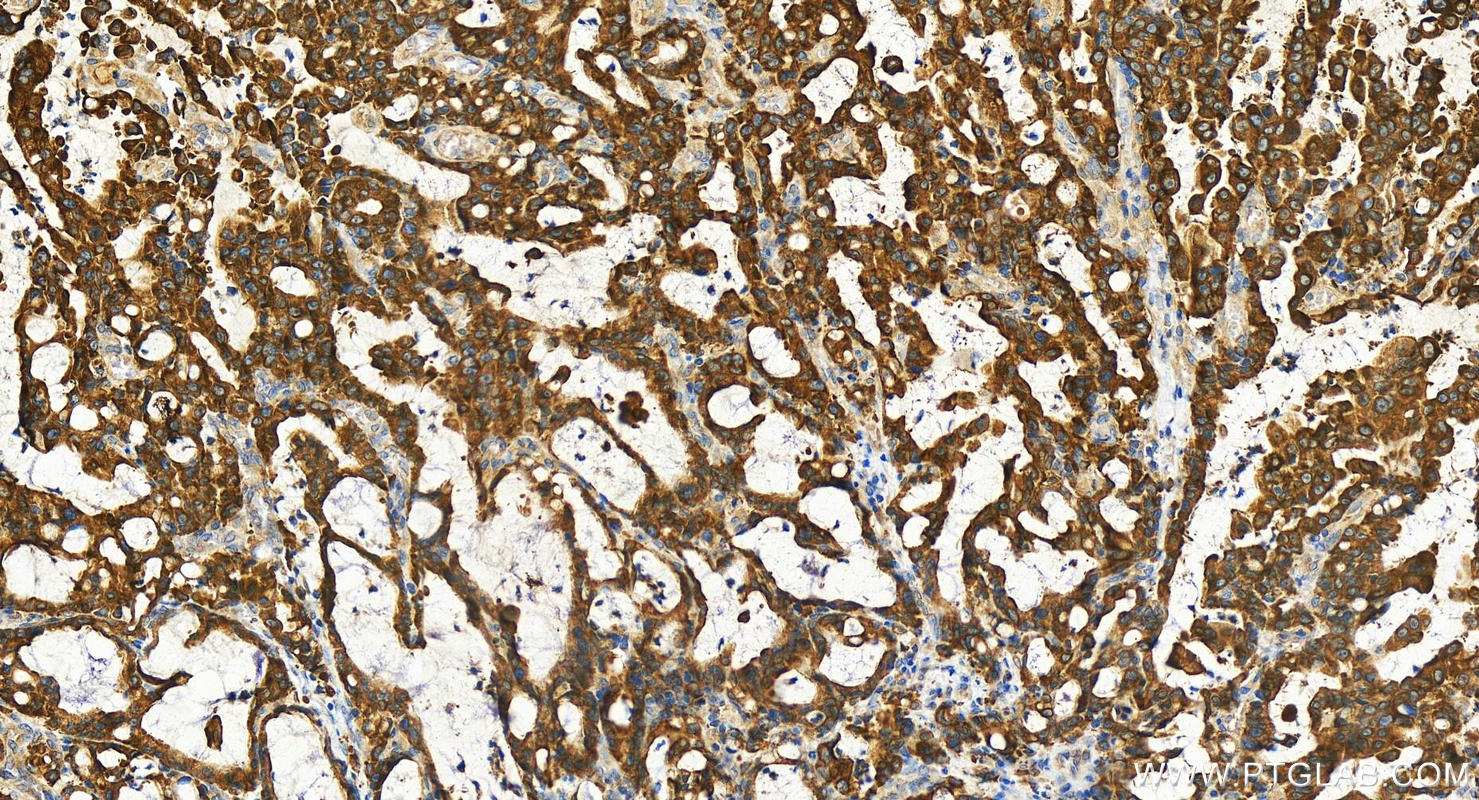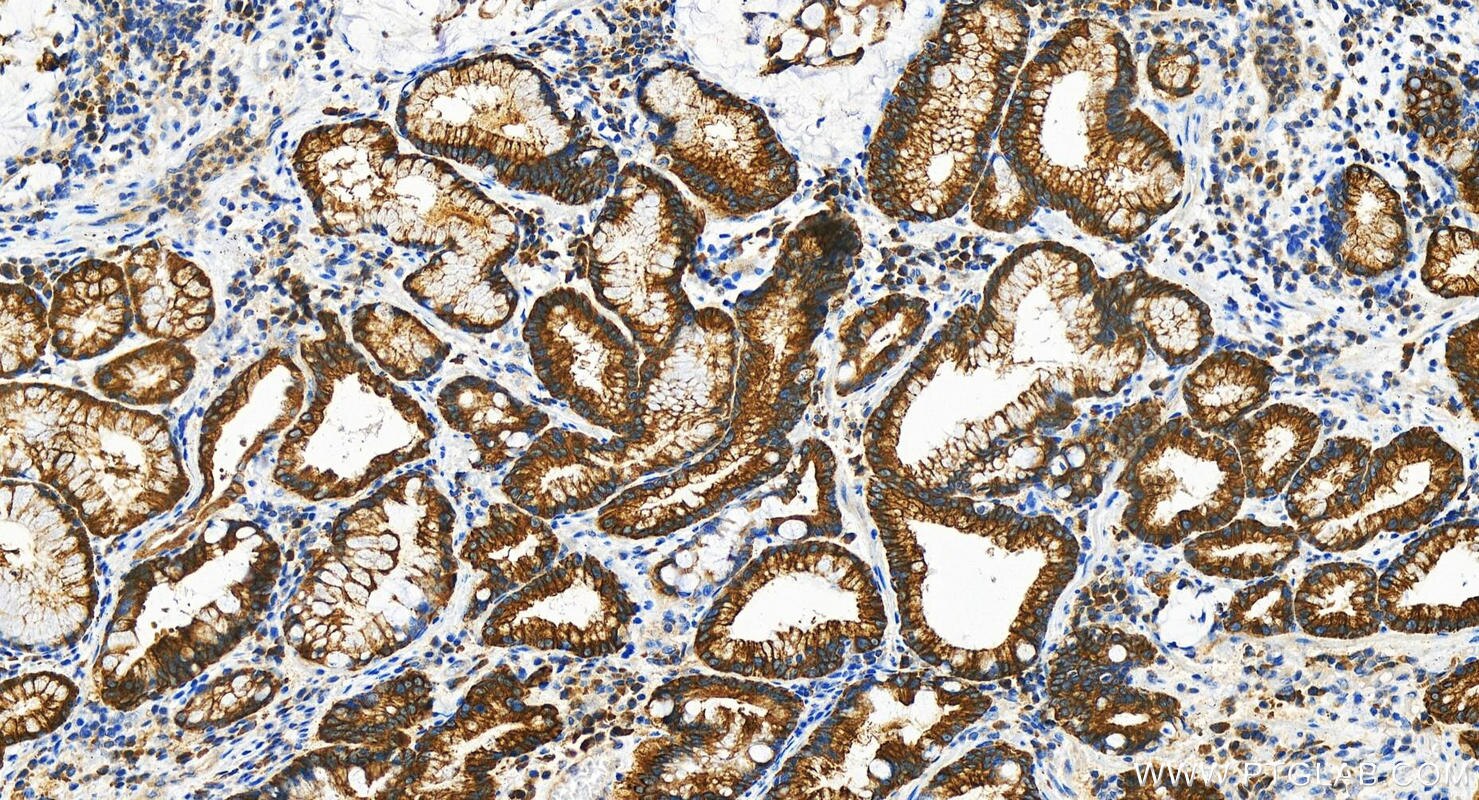Anticorps Polyclonal de lapin anti-ALG9
ALG9 Polyclonal Antibody for WB, IHC, ELISA
Hôte / Isotype
Lapin / IgG
Réactivité testée
Humain
Applications
WB, IHC, ELISA
Conjugaison
Non conjugué
N° de cat : 29218-1-AP
Synonymes
Galerie de données de validation
Applications testées
| Résultats positifs en WB | cellules HL-60, cellules Jurkat, cellules THP-1 |
| Résultats positifs en IHC | tissu de cancer de l'estomac humain, il est suggéré de démasquer l'antigène avec un tampon de TE buffer pH 9.0; (*) À défaut, 'le démasquage de l'antigène peut être 'effectué avec un tampon citrate pH 6,0. |
Dilution recommandée
| Application | Dilution |
|---|---|
| Western Blot (WB) | WB : 1:1000-1:6000 |
| Immunohistochimie (IHC) | IHC : 1:200-1:800 |
| It is recommended that this reagent should be titrated in each testing system to obtain optimal results. | |
| Sample-dependent, check data in validation data gallery | |
Informations sur le produit
29218-1-AP cible ALG9 dans les applications de WB, IHC, ELISA et montre une réactivité avec des échantillons Humain
| Réactivité | Humain |
| Hôte / Isotype | Lapin / IgG |
| Clonalité | Polyclonal |
| Type | Anticorps |
| Immunogène | ALG9 Protéine recombinante Ag30489 |
| Nom complet | asparagine-linked glycosylation 9, alpha-1,2-mannosyltransferase homolog (S. cerevisiae) |
| Masse moléculaire calculée | 70 kDa |
| Poids moléculaire observé | 70 kDa |
| Numéro d’acquisition GenBank | BC009255 |
| Symbole du gène | ALG9 |
| Identification du gène (NCBI) | 79796 |
| Conjugaison | Non conjugué |
| Forme | Liquide |
| Méthode de purification | Purification par affinité contre l'antigène |
| Tampon de stockage | PBS with 0.02% sodium azide and 50% glycerol |
| Conditions de stockage | Stocker à -20°C. Stable pendant un an après l'expédition. L'aliquotage n'est pas nécessaire pour le stockage à -20oC Les 20ul contiennent 0,1% de BSA. |
Informations générales
ALG9 encodes an endoplasmic reticulum enzyme that builds N-glycans, the third ER protein-encoding polycystic disease gene after GANAB and DNAJB11. Autosomal recessive loss of ALG9 results in a severe congenital disorder of glycosylation (CDG) with a multiorgan phenotype that includes kidney cysts (PMID: 31395617). Western blot analysis detected ALG9 at an apparent molecular mass of 70 kDa.
Protocole
| Product Specific Protocols | |
|---|---|
| WB protocol for ALG9 antibody 29218-1-AP | Download protocol |
| IHC protocol for ALG9 antibody 29218-1-AP | Download protocol |
| Standard Protocols | |
|---|---|
| Click here to view our Standard Protocols |




